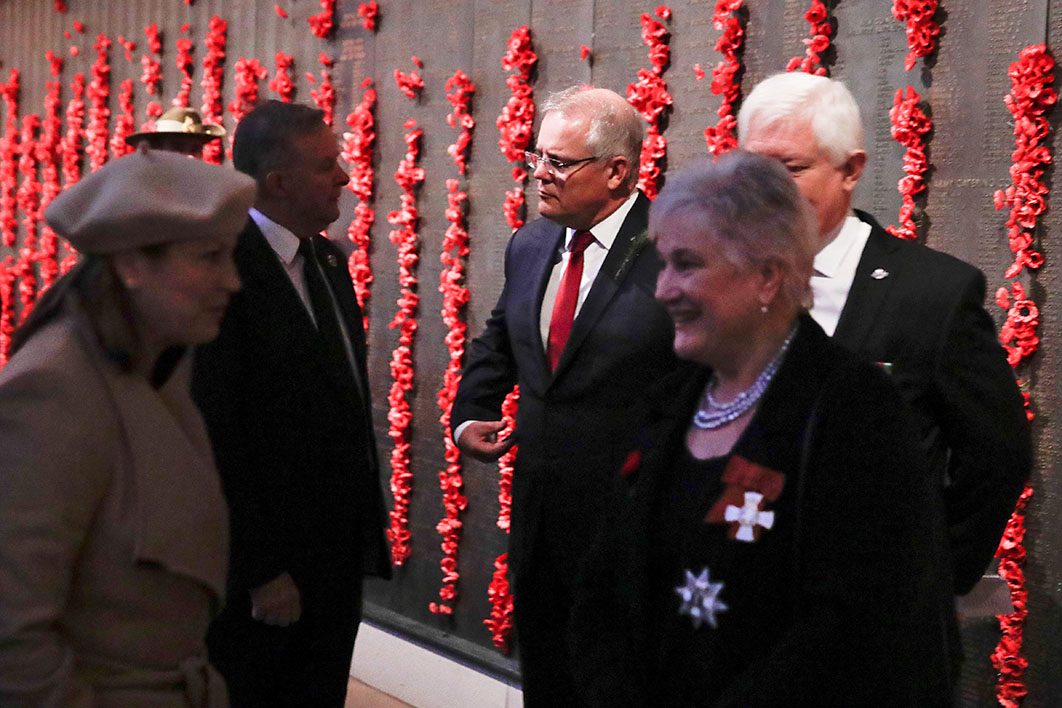Scott Morrison’s star continues to rise, with a great big 68 per cent satisfaction rating in the latest Newspoll. As better prime minister he doubles opposition leader Anthony Albanese, 56 to 28. And these are on top of his leaps several weeks ago.
Cometh the hour, cometh the leader, and all that.
But voting intentions, by contrast, are decidedly sub-stratospheric: the government is on 41 per cent, Labor on 36 and the Greens 12, and the estimated two-party-preferred is 50–50. And elections are funny things: votes, not personal ratings, decide who forms government.
There’s a general assumption among politics-watchers that high approval ratings bode well for elections, and that party support will follow when push comes to shove. The last federal election provided mild evidence for that, with Morrison always easily ahead of Bill Shorten on personal measures, and then that last-minute miracle. But election 2019 was an outlier on several fronts (including opinion poll fails for possibly six months, or even longer).
The usual dynamic is the opposite: when a party leader is miles ahead of an opponent, it seems to artificially inflate his or her party’s vote. Then, during the election campaign, both measures significantly decline. A dramatic example came in 2001, after the Tampa, September 11 and children overboard, when John Howard entered the October campaign hugely dominant personally, and also with double-digit two-party-preferred voting-intention leads. That government ended up, on election day, with a vote of 51 to Labor’s 49.
Kevin Rudd’s messianic standing pushed a similar trajectory in 2007. Labor went into that campaign on around 56 per cent of the two-party-preferred vote but its share fell during the campaign. The party’s eventual 52.7 per cent was lower than had been registered in any survey since Rudd took over as leader a year earlier.
So today the government enjoys a wartime leader’s ratings, but lineball support in a hypothetical election contest. But of course there are a couple of provisos. The first is the usual one, that no election is on the horizon and won’t be, probably, for two more years. The second is that our worlds are in the process of being turned upside down by the coronavirus and governments’ responses to it. Who knows what the political rules of the game will be after this?
Speaking of which, “a good election to lose” is a hackneyed phrase, but let us briefly contemplate a road not travelled: that widely expected Bill Shorten prime ministership emerging in May 2019.
Labor would be barely into its first term when the international catastrophe dropped, requiring the quick dispatching of bucket upon bucket of public money. In 2008–09 the Rudd government didn’t hesitate, but the party paid a terrible long-term political price for it; it still struggles with the legacy today. Most Australians think it spent too much.
In 2020, from Labor’s point of view, it’d be: oh my God, here we go again, though this time it’s taken about double the amount as a percentage of gross domestic product. So far.
If you think a Coalition opposition in this parallel scenario would support the breathtaking levels of government spending we’re witnessing, well… the owners of that giant coathanger over the harbour are still fielding offers. The laws of politics don’t allow it. No Liberal opposition leader could go along with it even if he or she wanted to; the party room and wider conservative movement simply wouldn’t tolerate it.
You can find the argument in commentatorland already: the shutdown is unnecessary, an overreaction, the spending is a waste, the virus was never going to hit Australia anyway. In other words, the GFC narrative refurbished.
There’s disquiet among the self-proclaimed “base” (Sky After Dark, free-market think tanks, News Corp columnists), but right-wingers in the party room (Barnaby Joyce aside) have shown admirable restraint. A prime minister has much greater authority than an opposition leader. Certainly one with a miracle win under his belt and a 68 per cent satisfaction rating. (Bushfires, Hawaii, who can remember those?)
It’s possible that if Labor were in government, having been burnt so badly by the GFC, it would be tempted towards timidity. In fact there seems to be some evidence that around the world the bigger stimuluses are coming from centre-right governments.
That “Nixon and China” template is pretty hoary, but it has its uses. •





